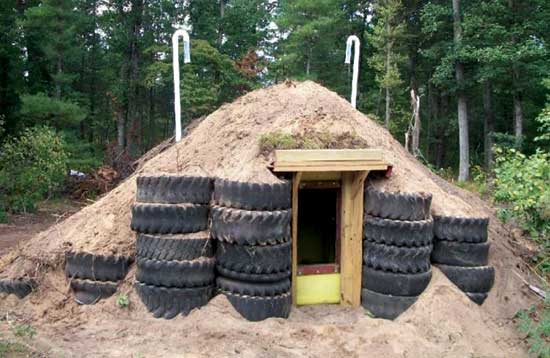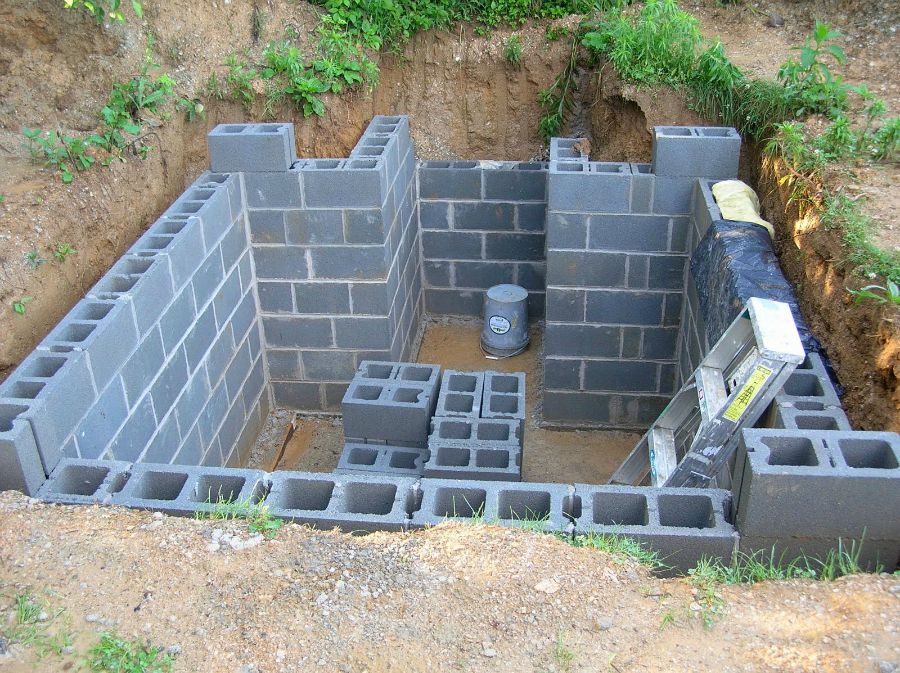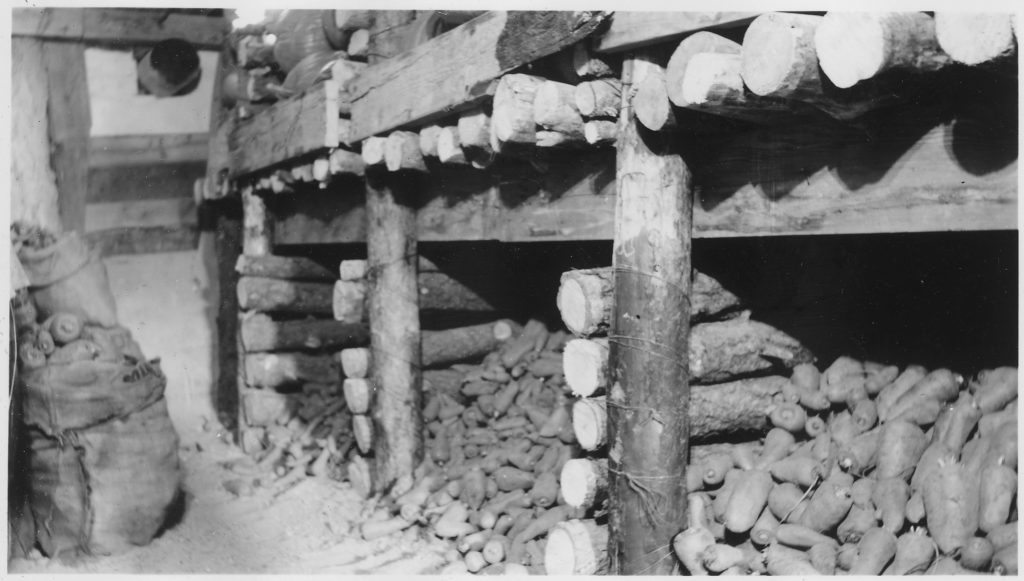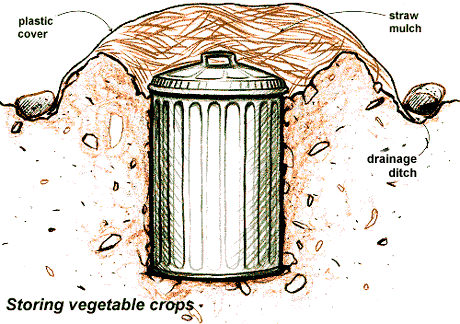
Storing up your food in root cellars is very useful if you are a traveler and have a family or partner at home relying on you.
1. Military deployments mean you’re away from home and your spouse is left to care for the family. Getting fresh groceries might not be easy to do if your spouse is caring for children.
2. Driving on the road as a truck driver, for example, means you’re unable to be around to handle half of the load.
Examples like the two listed above illustrate the need to utilize roots cellars. You can have access to fresh food nearly year round, and little work is needed to get one started.
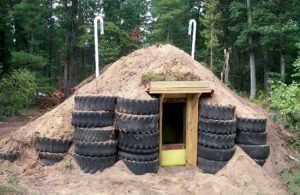
Early North American colonists carried the old-school, tech-idea into the new world, and made good use of their unfinished floors. A well-insulated root cellar can slow deterioration and rot in fruits and vegetables. Temperature readings can drop nearly 20 degrees for a pit that is just 1 foot deep, but a square pit 10 feet would be ideal to keep items cooler.
The root cellar, whether an extension of a home or a unit separated from the main building, is excellent for protecting your food stores.
Dirt and the right conditions is simple technology put to good use. Dirt enables food to be preserved through a combination of low temperatures, low humidity and an absence of light. This is ideal rather than high temperature and high humidity because it can breed bacteria, mold and yeast. Most homes are kept at temperatures between 65 to 75° F. This is not the ideal the storage temperature.
A tornado shed that can be doubled as a root cellar
The best is about 40-50°. For example, storing foods like potatoes in a dry place will cause them to become dehydrated because they are about 80% water. You need high humidity of 80-90% to keep vegetables from shriveling up and losing their high water content. Damps dirt floors are going to provide the conditions you need. Food can be kept frozen during the winter months and cool during the summer months.
You don’t have to build a separate shelter/cellar outside, unless you have the space, to enjoy the benefits of a root cellar. For those stuck in the city and with little land available to house a structure, there are options.
- Closet: A box of food can be stored in a cool closet. With the lights out, it will keep the closet dark and cooler. It’s not exactly a cellar but it will work. This area is good for storing canned items.
- Ground in the backyard: A simple box can be covered over with dirt to preserve root vegetables like carrots, beets and potatoes because they need to stay moist and cool. If you don’t use a box, you might consider using chicken-wire or a flexible wire-mesh called hardware cloth to surround your goods. These can prevent some critters like rodents, snakes and insects from getting into your stores.
- Bucket or Garbage Can: A better way to preserve your foods is to use a bucket or a garbage can buried beneath the dirt. You can put a sheet of wood, some dirt over the sheet, and then a stone to hold the lid down. Very effective.
- Basement Utility Room: A utility room with a furnace can be used to store onions, squashes and dried canned foods. Canned goods are best stored here rather in the garage because it can get too cold in the winter and ruin your stockpile. You want warm and dry conditions.
- Basement with Concrete Floors: will have a lower humidity and you can place your canned items on it. Attic: Attics are great because they tend to be warm and dry. Use the attic to store herbs and dried vegetables. However, if your attic becomes cold, think about rotating your food to another location. Attics also get hot and humid as well.
For those who have a cellar:
- Basement with dirt or dirt and concrete floors: Some homes have cellars with dirt and concrete floors. Use half for your vegetables, and the other half for canned goods and other durable, easy to stack and store items.
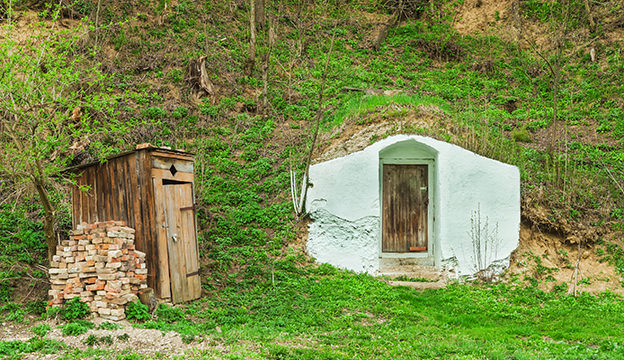
http://commons.wikimedia.org/wiki/File%3AINTERIOR%2C_EAST_WALL_OF_ROOT_CELLAR_-_Stamm_Farm%2C_Butcher_Shed%2C_Wash_House_and_Root_Cellar%2C_Gruber_Road_vicinity_(Penn_Township)%2C_Mount_Pleasant%2C_Berks_County%2C_PA_HABS_PA%2C6-MTPLES.V%2C11E-3.tif
By Kotivalo (Own work) [CC-BY-SA-3.0 (http://creativecommons.org/licenses/by-sa/3.0)], via Wikimedia Commons

